


 |

|
 |
| |
The Army towers looked like several square boxes on tripods, the catwalks connecting to form a partial circle with a 'hub' tower in the middle. Each box was about the sixe of a two-floor house with the lower floor used for operations and the upper floor for accommodation. The Navy forts were more solid-looking single structures having the appearance of a 'ship on stilts'. The 30ft diameter stilts supported a large platform on which were constructed a number of cabins (with a high 'lookout' in the centre) and the spaces at each end were occupied by anti-aircraft guns. The 'stilts' were large round concrete legs sunk firmly into position on the sea bed and formed the accommodation of the facility as they were hollow and eight floors high, with all but the top couple of floors being below sea level at high tide. The floor areas were quite large, enabling them to accommodate about a dozen two-tier bunk beds around the wall. The space was originally designed for a complement of about 120 men. |
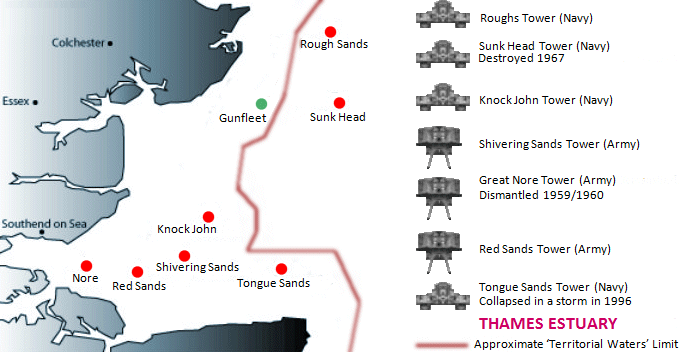 |
 |
 |
| There
were other marine structures in the Thames area at various times, including
one thought by many to be one of the 'pirate' towers. This was Gunfleet
and, at 74 feet, was a kind of lighthouse looking like a water tank on stilts
- not dissimilar to one of the single sections of the Army forts.
It was constructed in 1850 as
a screw pile lighthouse designed by Mr. Walker of Trinity House but based
on the invention of an Irish man called Alexander Mitchell. There was a
similar construction at Chapman Sands off Canvey Island until the sea finally
got to it in the 1950s. They are both somewhat similar in appearance to
the shore-based constructions visible at Dovercourt on the East coast. The forts were not a popular posting and were abandoned wholesale by the military at the end of the war after which ownership became a matter of opinion as they were generally considered to be situated in international waters and not subject to any particular mainland jurisdiction. In fact, the War Office seemed to be rather keen to pass responsibility for them onto other government departments having tried, unsuccessfully, to sell them off in 1963. This didn't really matter, of course, as they were doing no harm and were of no real practical use to anyone - until pirate radio came along! By an extremely questionable interpretation of an obscure passage in the Geneva International Convention of the Sea, 1958, which was ratified in September 1964 by the British government in an Order in Council: 'The (Thames) estuary may be considered as a bay if the area of water within the bay exceeds that in a semi-circle drawn, with a 24 mile baseline, across the indentation in the coast' ... and another debatable decision which considered sandbanks visible only during unusually low tides at certain parts of the year to be part of the British mainland, all of the towers, except Roughs and Sunk Head, were declared to be inside territorial waters and therefore subject to prosecution under the Wireless and Telegraphy Act. The area of water in the bay, 683 square miles as calculated by a Ministry of Defence naval surveyor, was only 5 square miles more than that inside the theoretical semi-circle! (For more information on marine towers/forts, including Grain Tower, Spitbank and Bull Sand, see Bob LeRoi's excellent pages) |
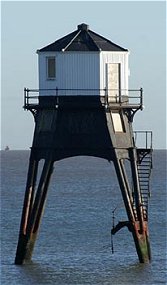
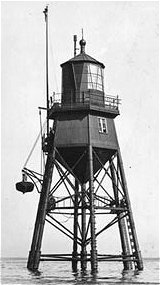 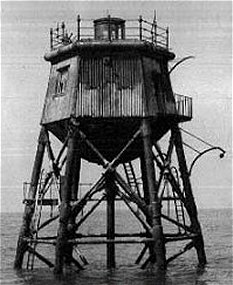 |
 |
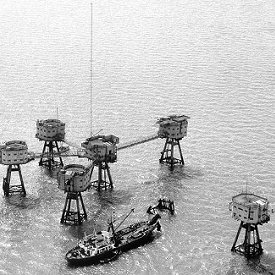 |
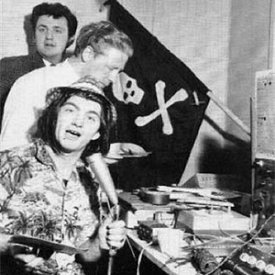 |
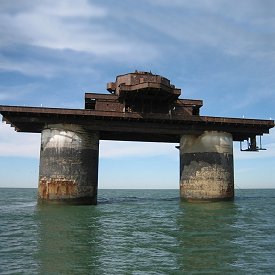 |
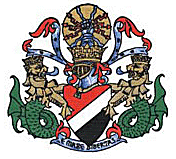 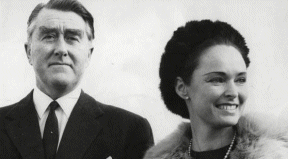 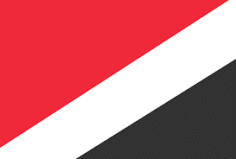 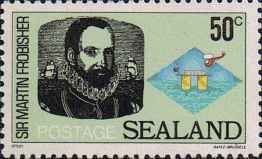 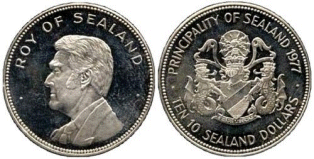 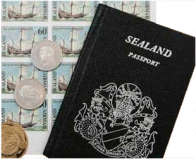 |
 |
On September 2nd 1967, his wife's birthday, Roy Bates declared the Roughs
platform, supported by 75ft concrete pillars, to be an 'independent nation'
named Sealand and proclaimed himself monarch. The following year, the Royal
Maritime auxiliary vessel 'Golden Eye' had three warning shots fired across
her bow as she approached the structure, forcing it to return to shore.
Roy Bates subsequently faced a summons under the Firearms Act but when he
appeared in the dock at Essex Assizes the judge decided that the courts
had no jurisdiction outside of territorial waters. In summing up, the judge
remarked on “this swashbuckling incident perhaps more akin to the time of
Sir Francis Drake”.
Prince Roy of Sealand proclaimed the Constitution of the Principality on
25th September 1975. Gradually, items of national identity were produced
such as the flag of the Principality of Sealand (red and black with white
diagonal stripe), a national anthem, stamps and even its own currency -
gold and silver coins designated as Sealand
Dollars. 'Official passports' for the Principality of Sealand were issued
to people who had, in some way, helped the birth of Sealand but were never
at any point for sale. In August 1978, a number of Dutchmen employed by German businessman Alexander Achenbach arrived at Sealand, ostensibly to discuss potential business dealings. In Roy's absence they kidnapped his son Michael and took Sealand in a coup d'etat. Roy recaptured Sealand with his own 'troops', by helicopter, and imprisoned the usurpers as prisoners of war, during which time the governments of both Germany and The Netherlands petitioned for their release. They did ask England for diplomatic intervention but were turned down, with the British government explaining that they made no claim on the territory and citing the court decision as reason for their refusal. The others had no choice but to recognise Sealand's sovereignty and West Germany even went so far as to send a diplomat to negotiate for the release of the German 'prisoner'. |
|
The Dutch prisoners were the first to be released under the Geneva Convention
which requires the release of all prisoners when a state of war does not
exist. The sole German continued to be held as, at some stage, he had apparently
accepted a Sealand passport and was technically guilty of the crime of treason.
Prince Roy, in the interests of Sealand's reputation, eventually released
the man without charge.
On 1st October 1987 Britain extended the limit of its territorial waters
from 3 nautical miles to 12, but had been beaten to the punch by Roy who,
the previous day, had declared his own extension of Sealand's territorial
waters to a similar distance, including large areas of the Suffolk and Essex
coast, to ensure that access to Sealand could not be blocked by British
territorial waters. To date, no official agreement has been signed between Sealand and Britain regarding the resulting overlap in claimed jurisdiction but a general policy of dividing the area between the two countries down the middle has been unofficially followed. International law does not allow the claim of 'new' land by the simple extension of sea rights and so Sealand's sovereignty was still guaranteed. Under this law, neither 'country' can claim rights to any part of the nother that falls within its 'new' boundary and it is to its credit that Britain has made no further attempts to take Sealand but still treats it as an independent State. Following a ruling by the DHSS, Prince Roy pays no British National Insurance during the time he spends on Sealand. There was another incident involving firearms in 1990 when warning shots were fired at a ship that had strayed too near Sealand. The crew of the ship subsequently made formal complaints to the British authorities but, despite Britain's severe prohibition of firearms, the government chose not to pursue the matter indicating that the Home Office still considers Sealand to be outside their umbrella of control. |
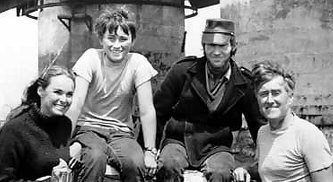 |
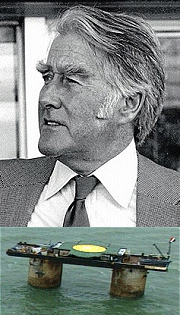 |
During 1997, a
number of forged Sealand passports started turning up across the world,
some of which were apparently used to open bank accounts in various countries
under false names. Less than 300 official genuine pasports were in existence
therefore it was unlikely that the items would be detected as forgeries
due to the fact that hardly anyone had ever seen one. The source was eventually
traced back to the same the same German who had unsuccessfully attempted
to take Sealand by force. He had created an unofficial 'Sealand Business
Foundation' that allegedly sold over 150,000 fake passports before being
found out, resulting in the curious facty that there are now probably 500
times as many forged Sealand Passports in circulation than official ones.
Apparently, a large number of the passports were being sold to people leaving
Hong Kong during the Chinese reoccupation for a dollar each. During early
2000 Spanish police brought action against criminals that had set up a website
selling fake Sealand 'passports' which are suspected of having been used
by illegal arms and drug-dealing rings. One of these fake 'passports' was
also encountered by police investigating the murder of fashion mogul Gianni
Versace. The current government of the Principality of Sealand states that "The Principality of Sealand recognises 'jus gentium' and has undertaken to regulate any activity with a view to compliance with 'jus gentium' and international law or to have it regulated." The acceptance and recognition of the Principality as an independent state, or country, has been demonstrated frequently over the last thirty years by both European and other States, but particularly Britain, which has stated unequivocably on a number of occasions that it has no jurisdiction within Principality territorial limits or that it takes no interest in events occuring within the jurisdiction of the Principality. In addition, many legal experts have carefully examined the arguments for and against Sealand sovereignty and have agreed with unanimity that 'jus gentium' applies as the basic principle of law supporting Sealand's independence. Due to failing health, Prince Roy reviewed the arrangements that had been in place for decades and, looking towards the future of the Principality, appointed his son, Prince Michael, the Prince Regent as 'Sovereign pro tempore' by Royal Decree in 1999. In June of 2000 an Anguillan-based company called HavenCo announced preliminary plans to locate its servers and satellite uplinks on the Sealand platform provided its independent status could be validated. The company planned exclusive leases of offices and operations centres in Sealand to users who wished to take advantage of its Internet colocation services. The purpose was to allow companies to use its servers to avoid the government scrutiny made possible by laws taken up by the U.K. and U.S.A. although HavenCo insisted that it would not allow any form of illegal trading. Sealand, of course, had no laws regarding the control of data traffic. To the dismay of many investors, the venture failed to become a a success. Ryan Lackey had moved to the fort in 1999, hoping to establish a safe location for privacy services such as anonymous remailers, and experiments such as anonymous digital cash. In a presentation to the 2003 DefCon convention, a former employee explained how internal politics and lack of investment had thwarted the venture. Contracts were broken, the bandwidth never materialised, and the location was vulnerable to DOS attacks. At the time of his presentation, HavenCo had failed to acquire any new customers and had, in fact, seen several of its existing customers leave. "Sovereignty alone has little value without commercial support from banks, etc," concluded Ryan. On Friday 23rd June 2006 the Roughs Towers top platform caught alight due to a fire caused by an electrical generator. |
| An RAF rescue
helicopter transferred a security guard to Ipswich hospital directly from
the tower and a team of 15 off-shore firefighters from the National Maritime
Incident Response Group (MIRG) were assembled, but after a reconnaissance
from the air it was decided it was too dangerous to land. There had been
a number of explosions on board as the fire reached gas bottles and batteries.
A firefighting tug sprayed the whole structure with water in the hope this
would eventually cool the fire and starve it of oxygen. The fire was left
to burn itself out and was under control by 3.10pm. Prince Michael of Sealand,
who had been in Spain visiting parents Prince Roy & Princess Joan, flew
back when he heard the news. He managed to get onto the platform the following
day to assess the damage: "There is an awful lot of damage. It is worse than we expected. It is sortable, but there is an awful lot of smoke damage - it's got everywhere". He was only able to reach the platform at the top of Sealand after his son James, 20, scaled it using a hook ladder. "It was very hairy, he was very brave and I am proud of him. Fortunately the winching mechanism is powered separately to the rest of it with a diesel engine, so we were able to get that working and get the boat up. I think there's about half a million pounds worth of damage. It is such a mess". Roy and Joan Bates had retired to Spain in 2006. Their son Michael, the “Prince Regent” and acting head of state since 1999, had opted for the terra firma of Essex, leaving the platform in the hands of a lone caretaker. With Michael having appointed his own son, James, as Prince Royal, Sealand remains one of the few micro-nations to have established a viable dynasty. |
 |
 |
“Listen, old boy,”
Bates told a journalist in 2000, “I like a bit of adventure. It’s the old
British tradition. Maybe Britain’s changed, but there’s a lot of us still
about.” Sealand Official
Website Roy Bates, born August 29th 1921, died on October 9th 2012, survived by his wife, Joan, and two children. Daily Telegraph Obituary 'Princess' Joan of Sealand (nee Joan Collins) died March 10th 2016 Daily Telegraph Obituary Sealand’s founder ‘Prince’ Roy Bates died at the age of 91 on 9th October 2012; he had been suffering from Alzheimer's disease for several years. He was succeeded by his son Michael His wife and co-founder ‘Princess’ Joan Bates died at the age of 86 on 10 March 2016. |
|
|
All
Original Material Copyright SixtiesCity
Other individual owner copyrights may apply to Photographic Images |